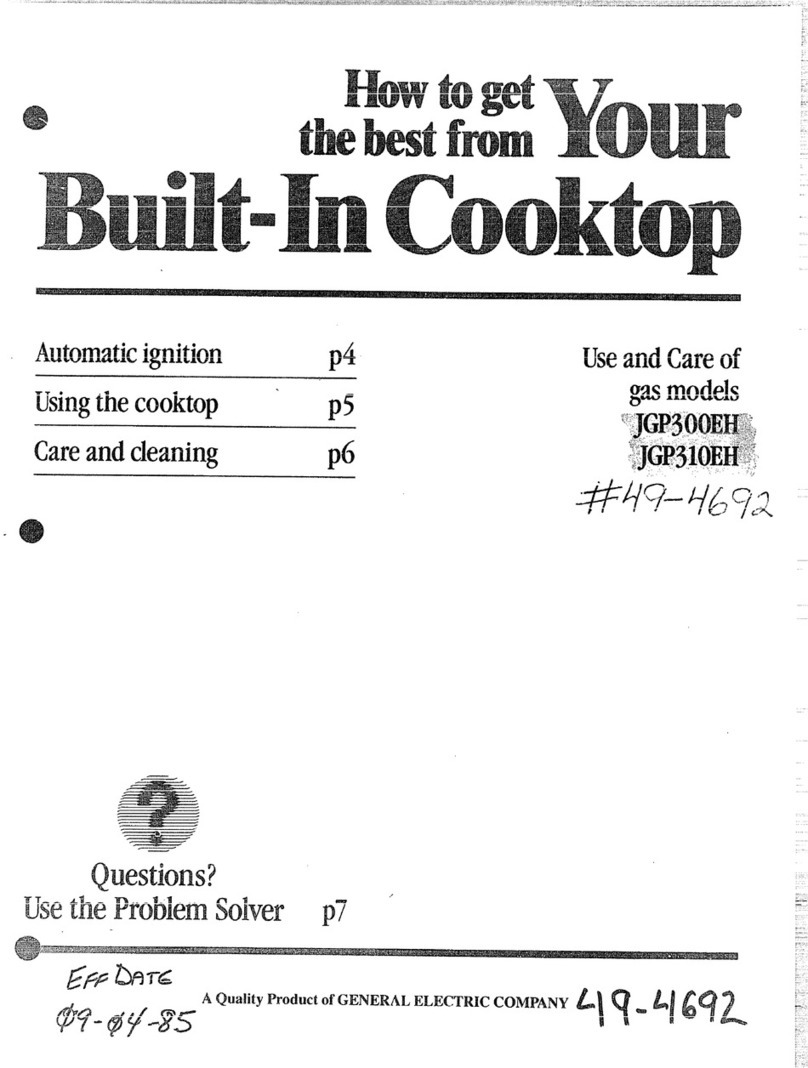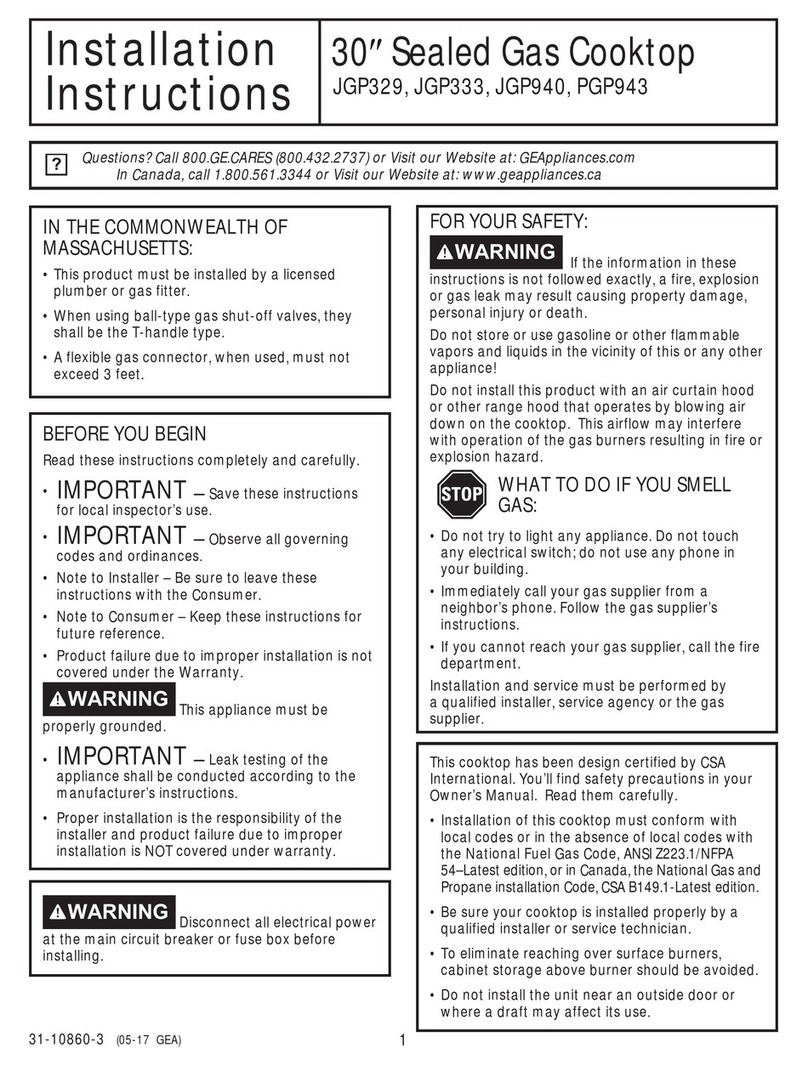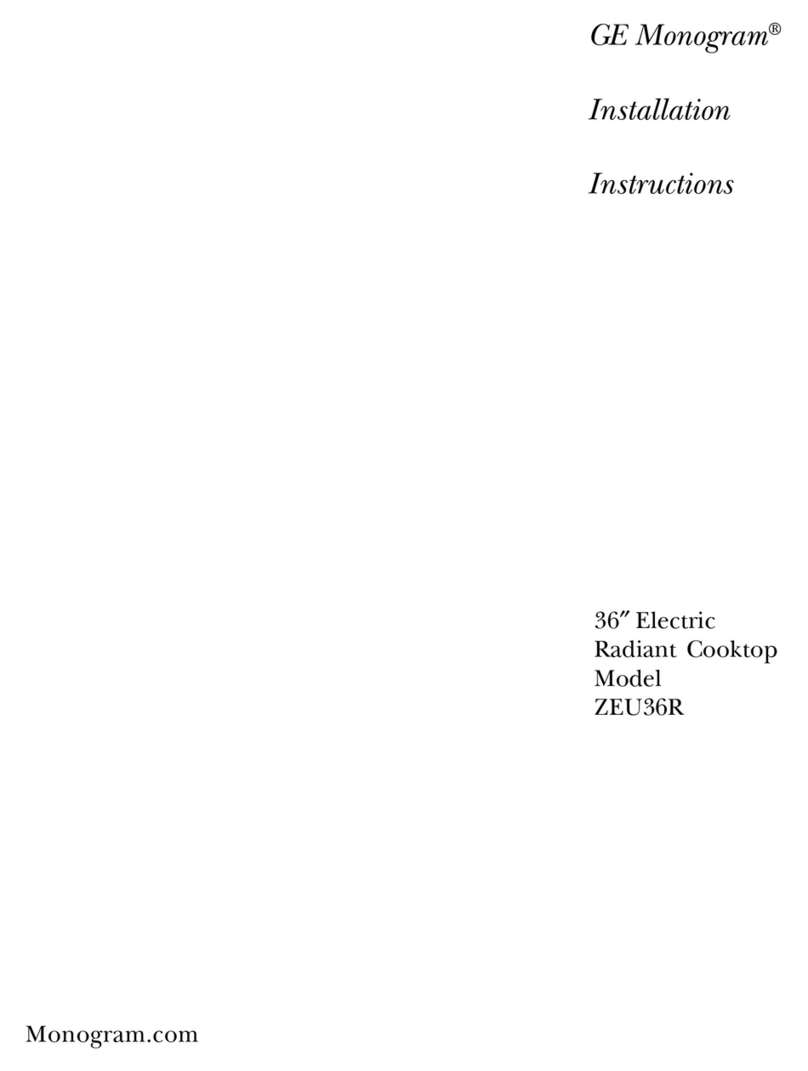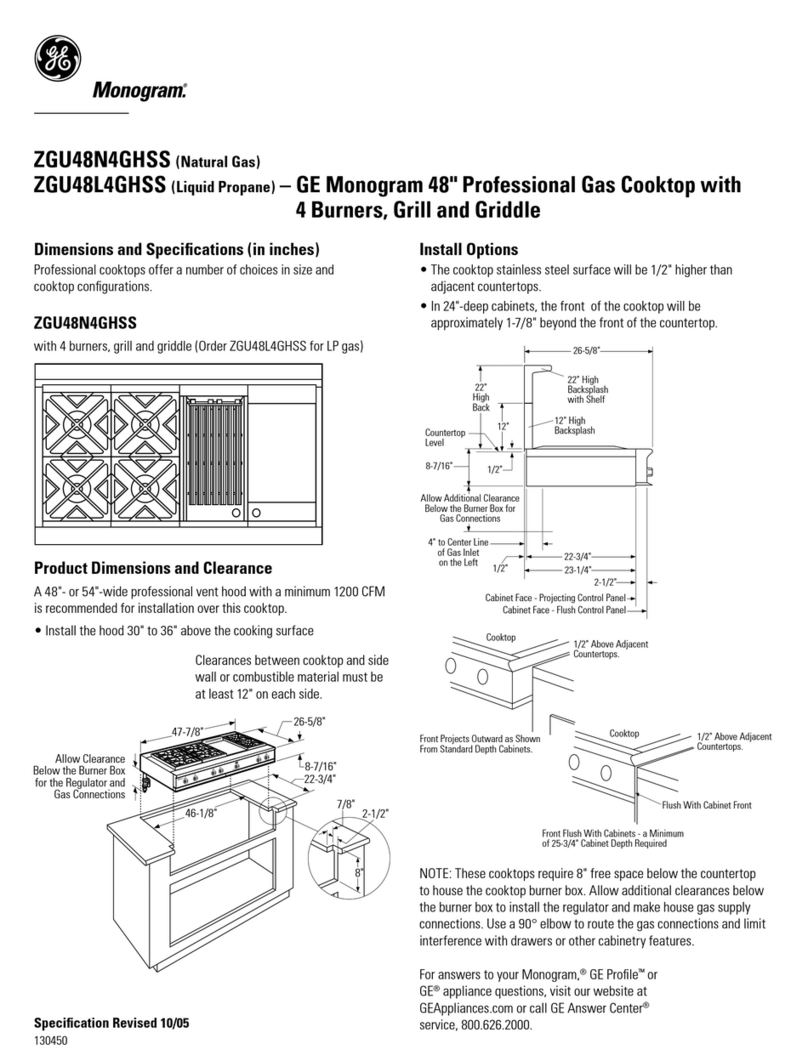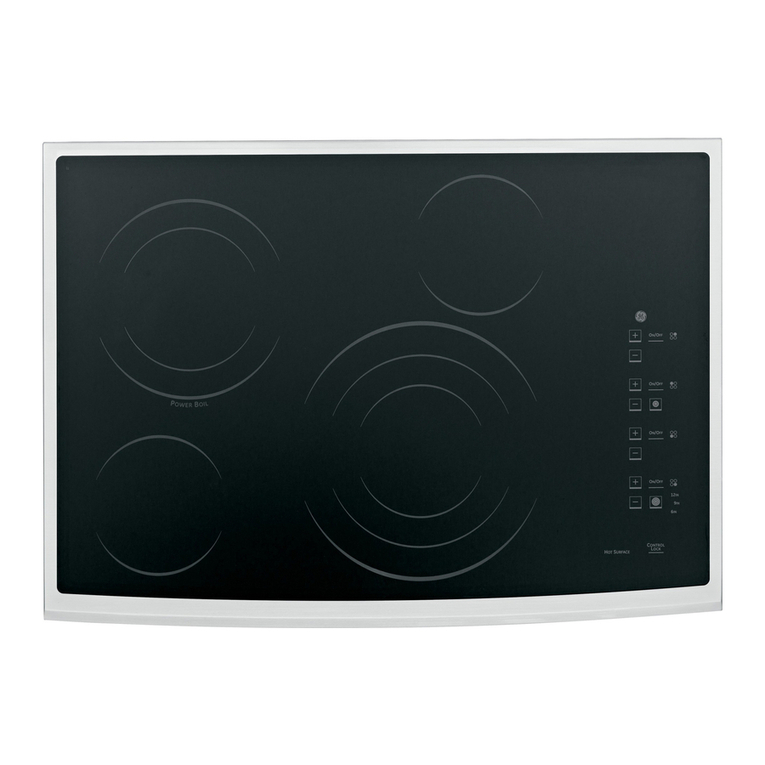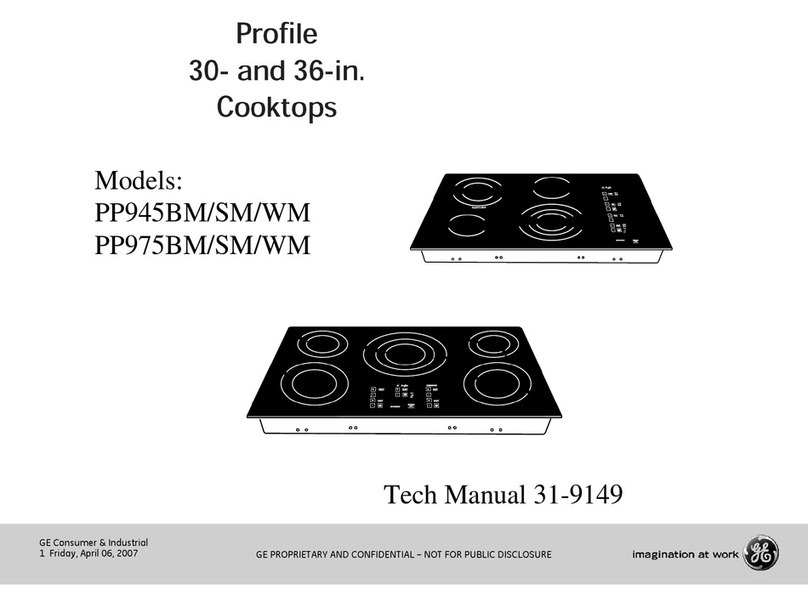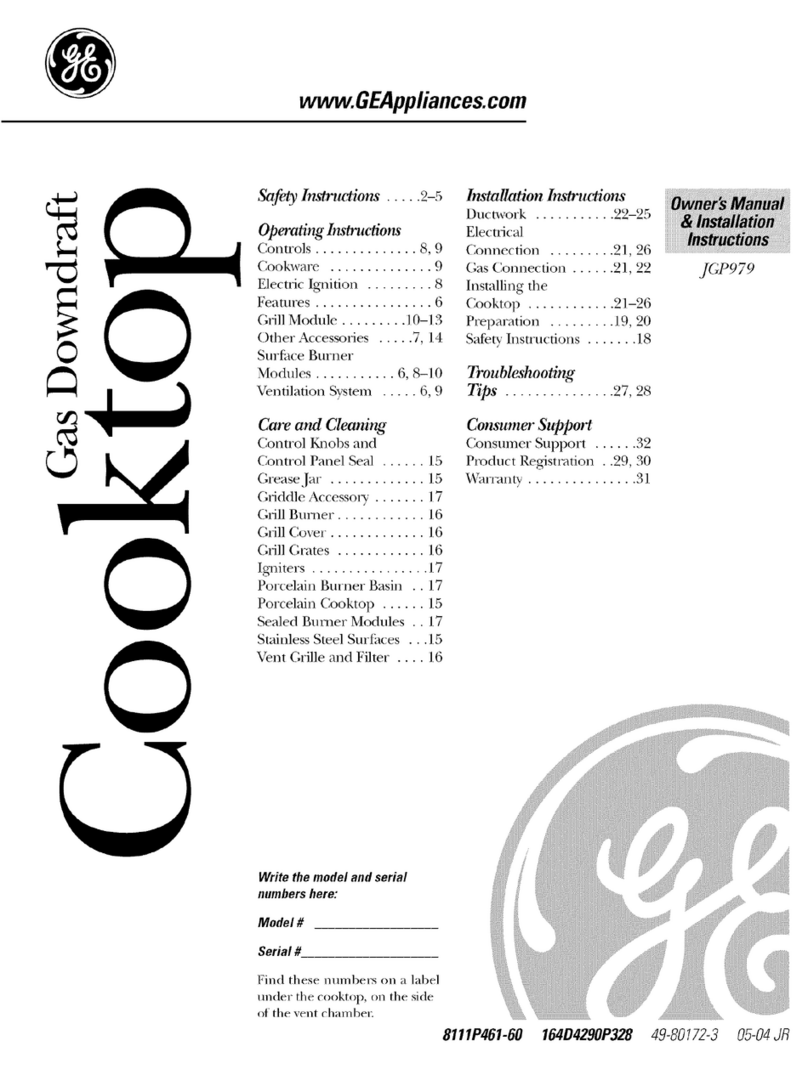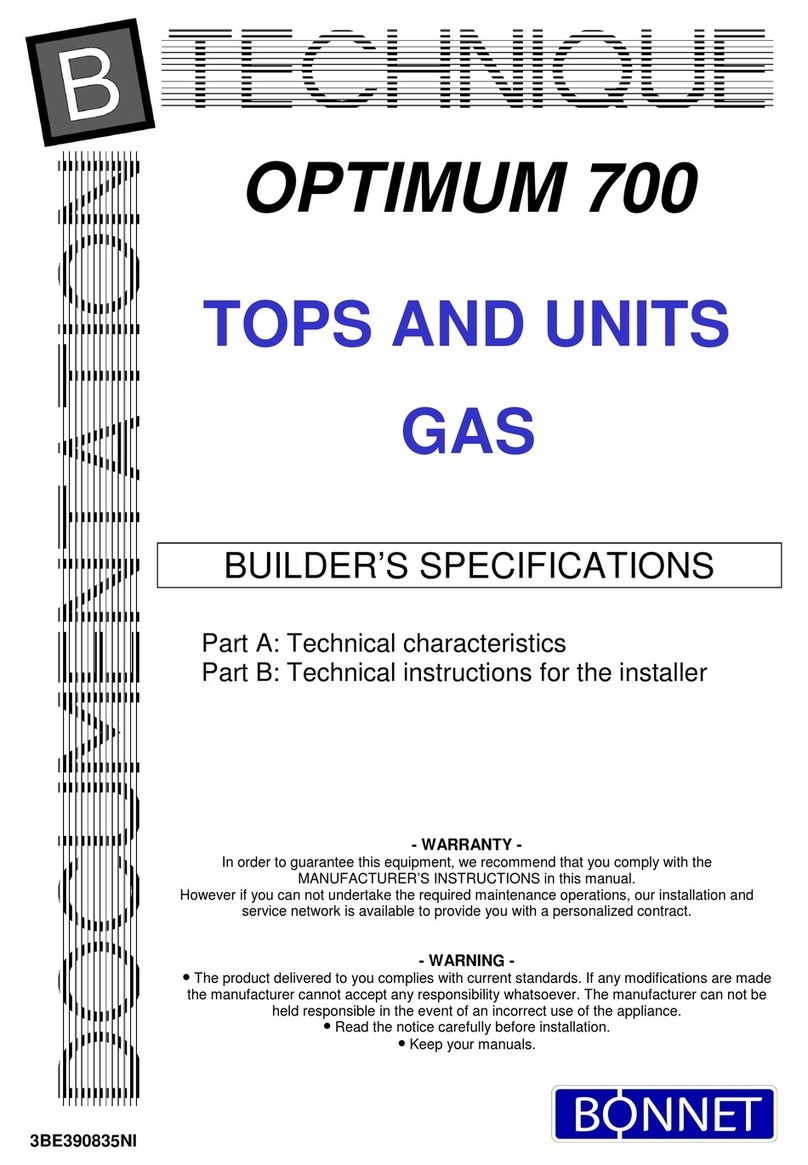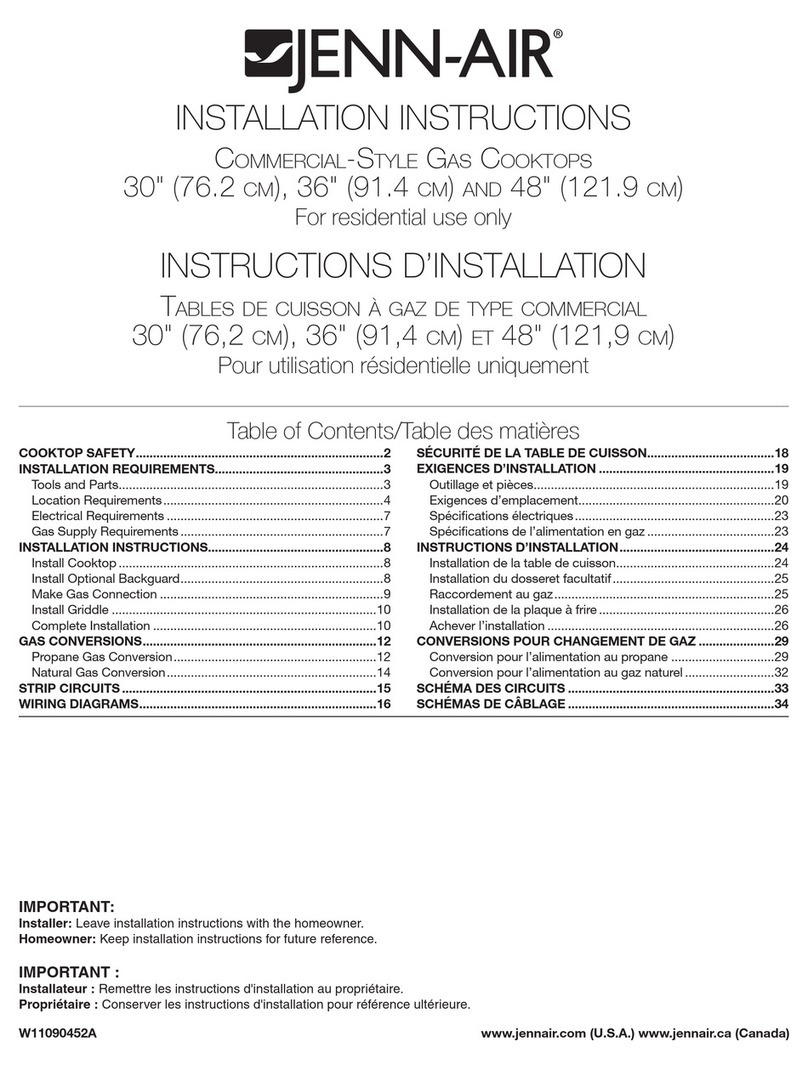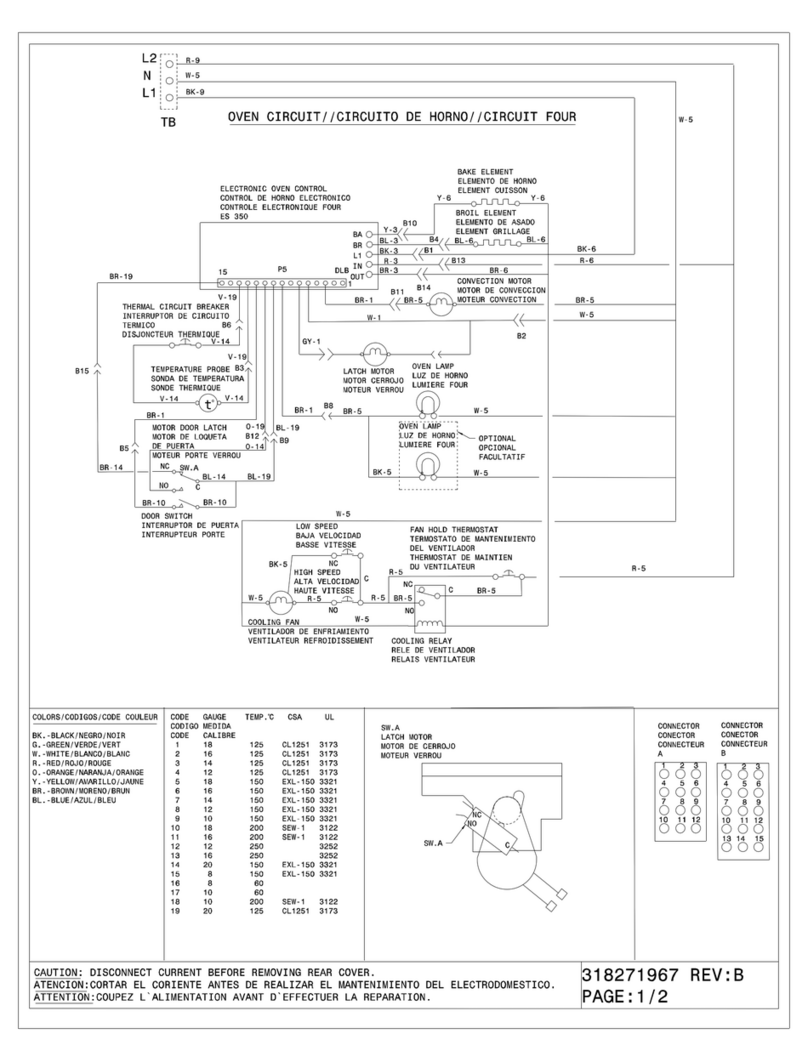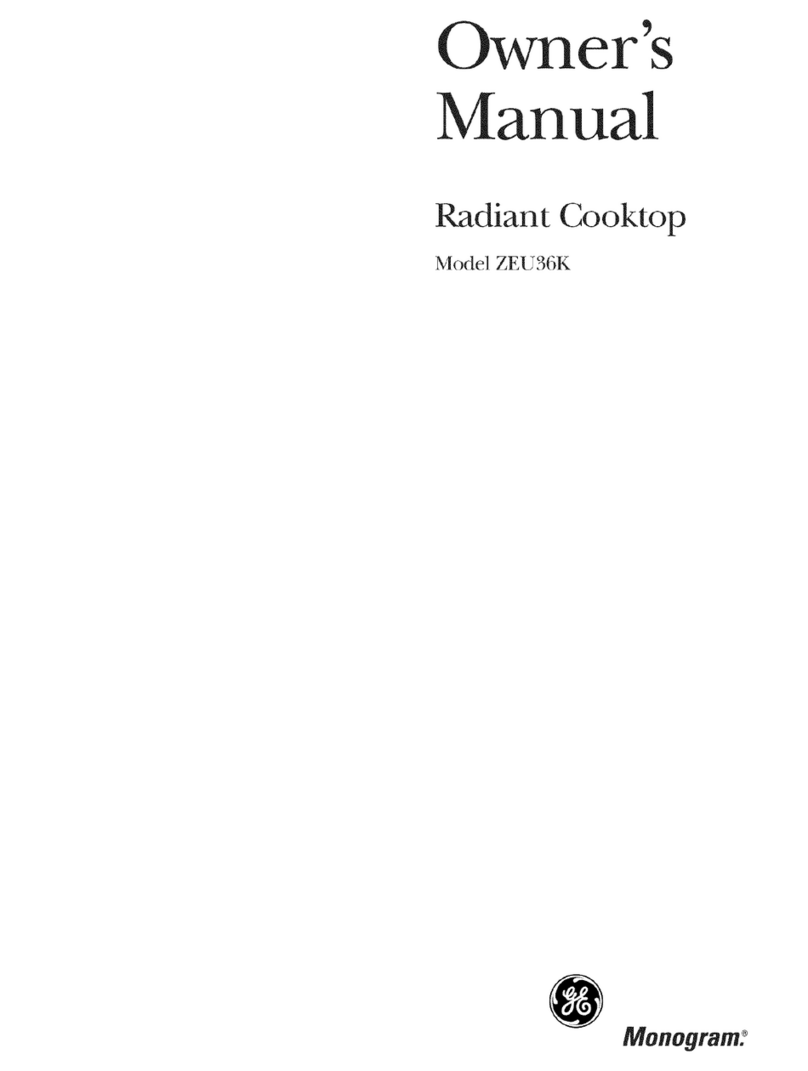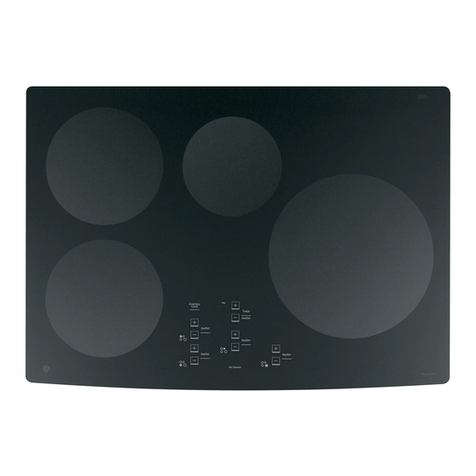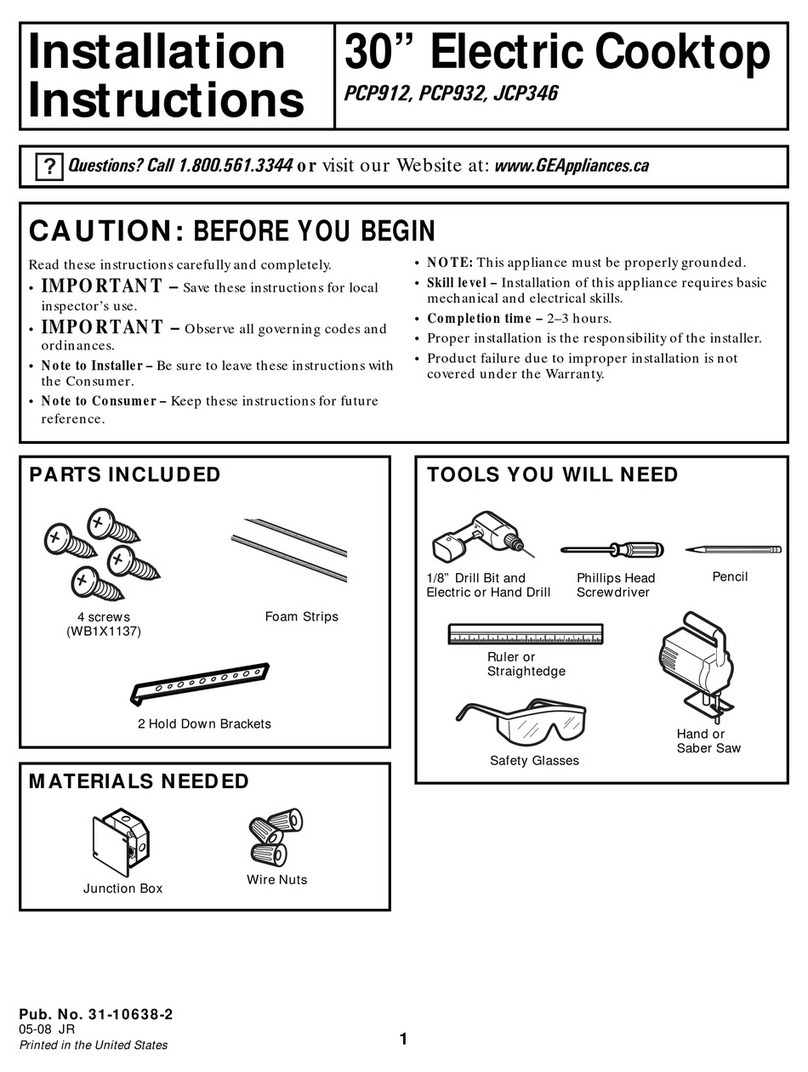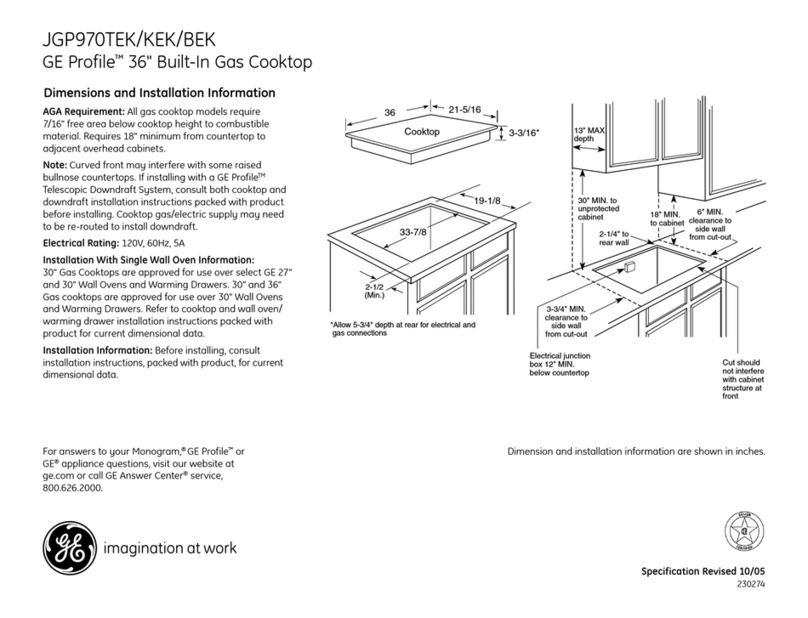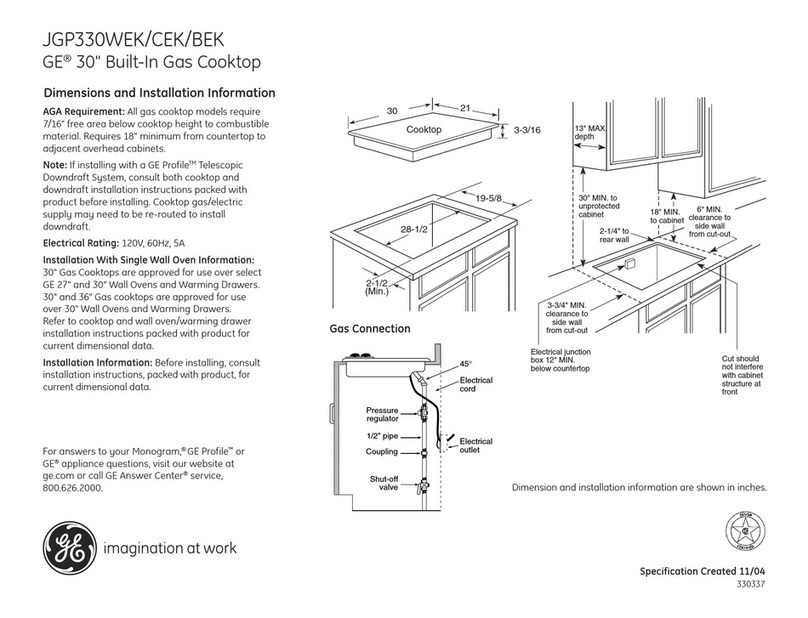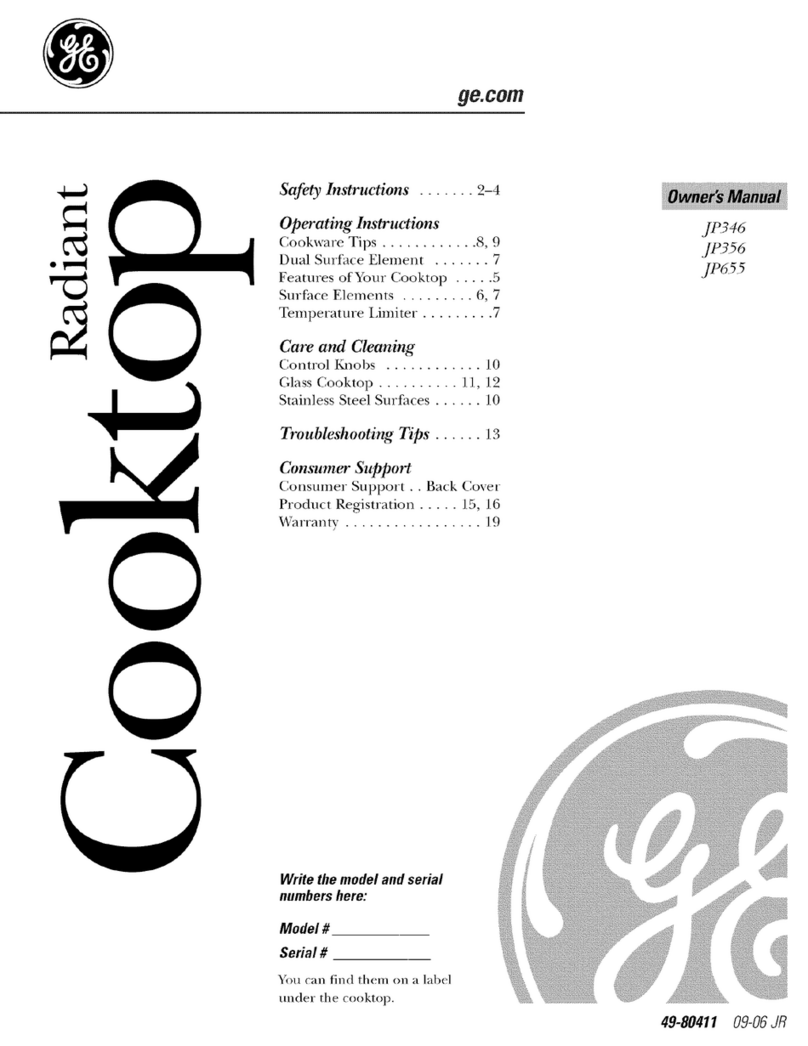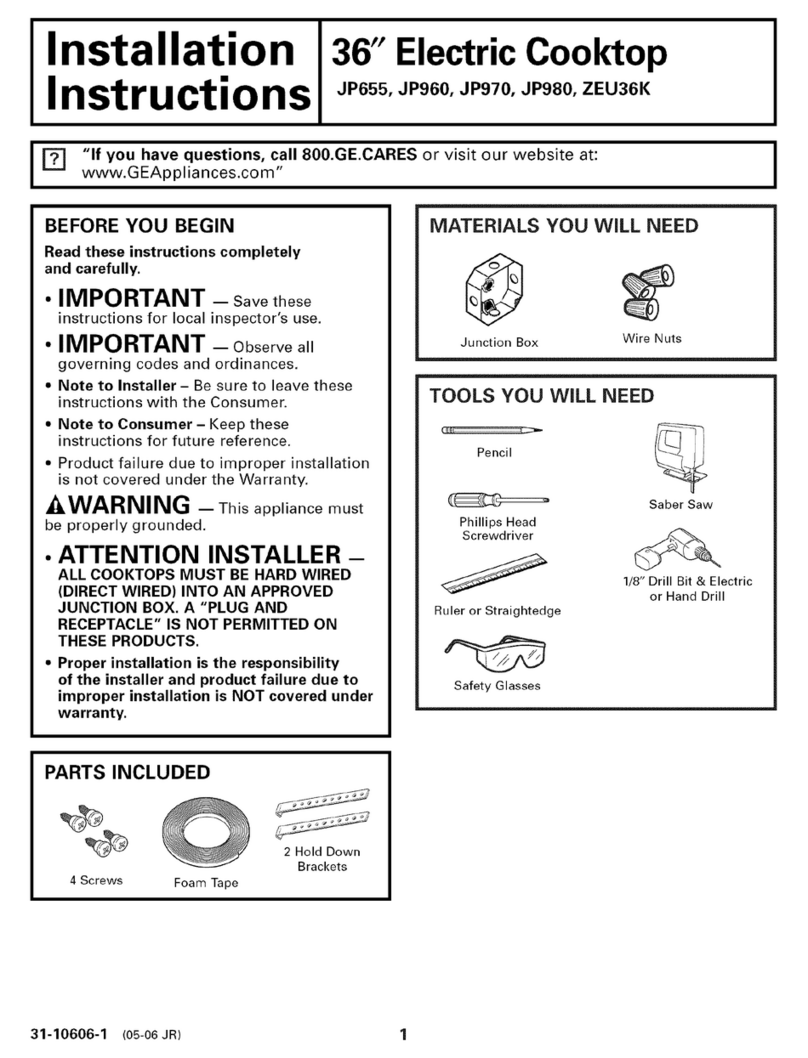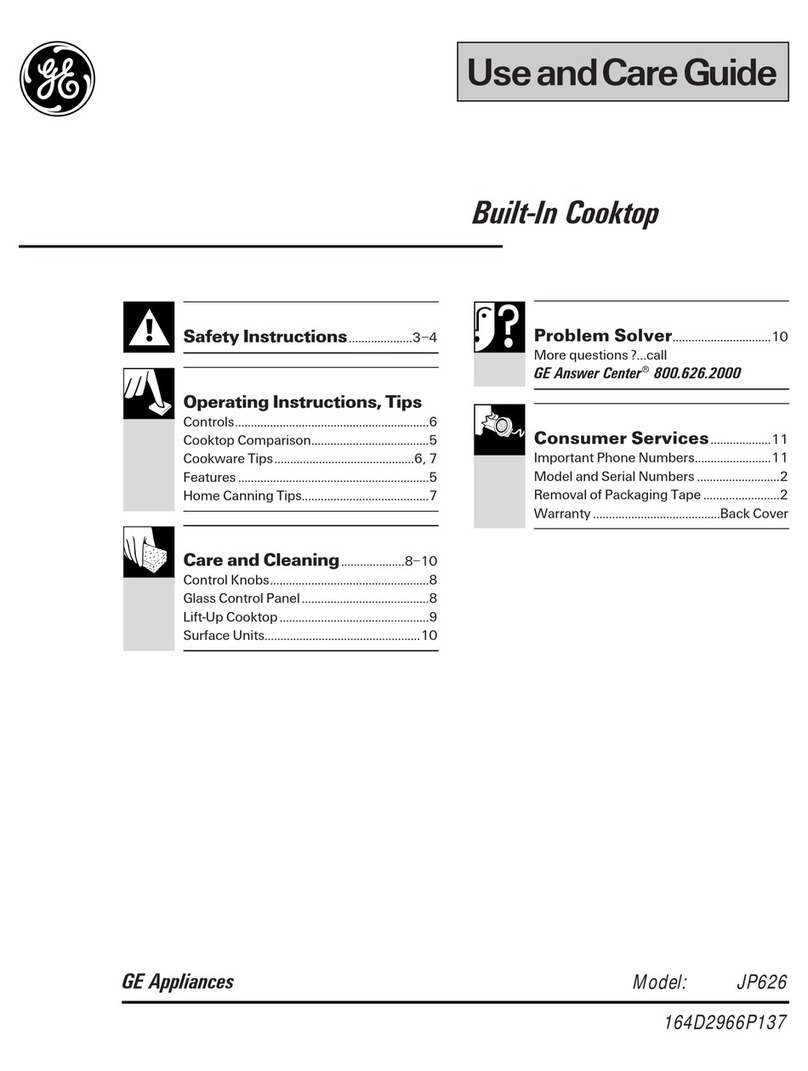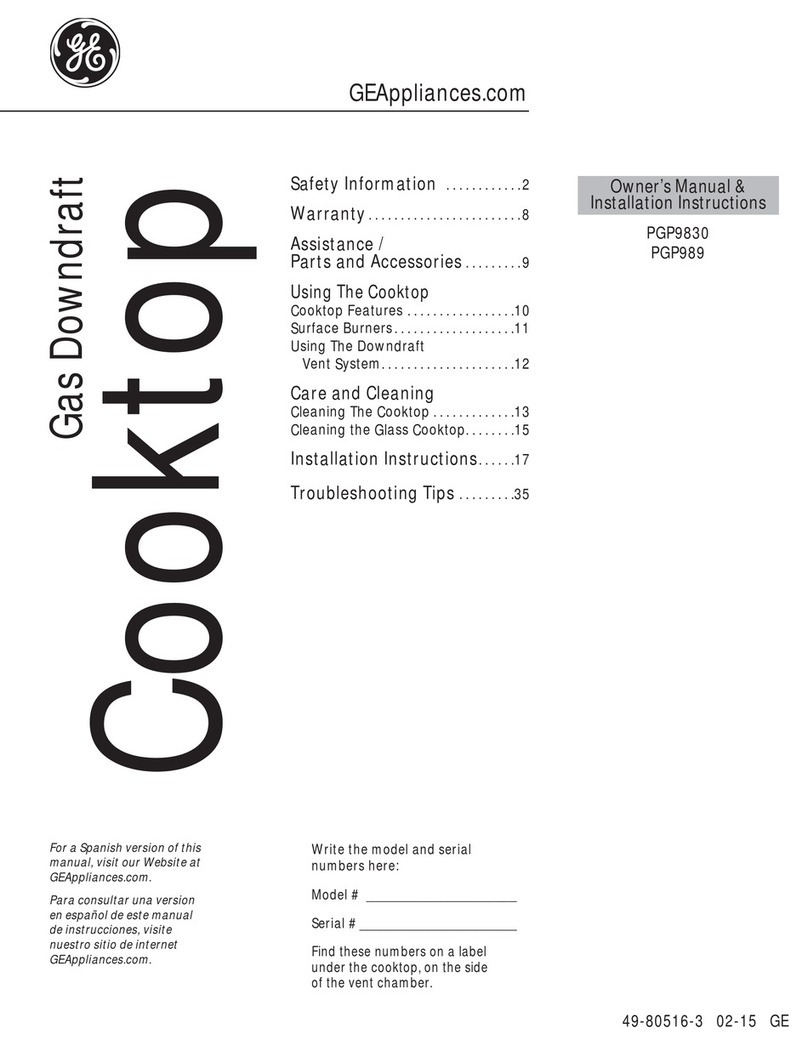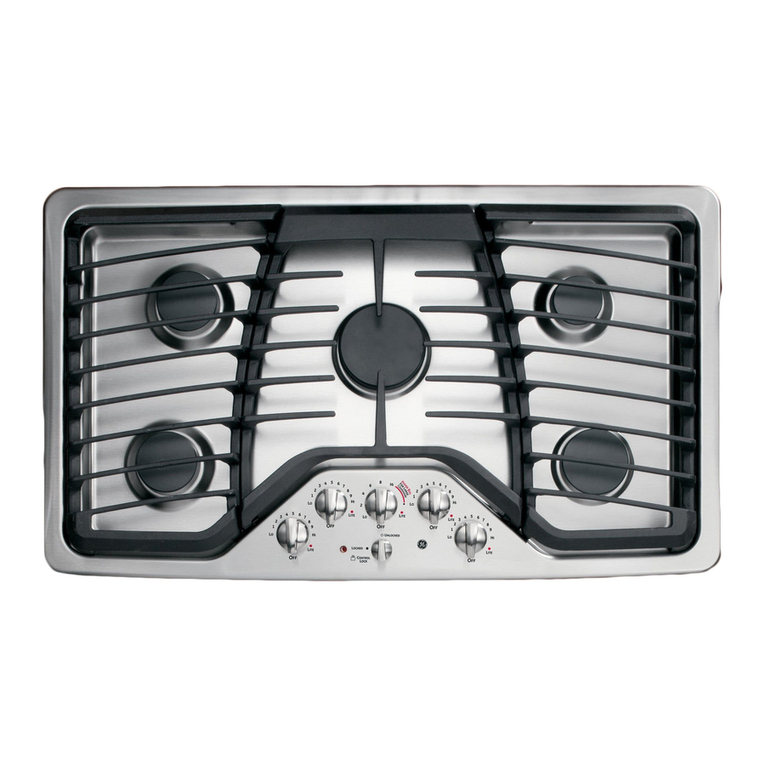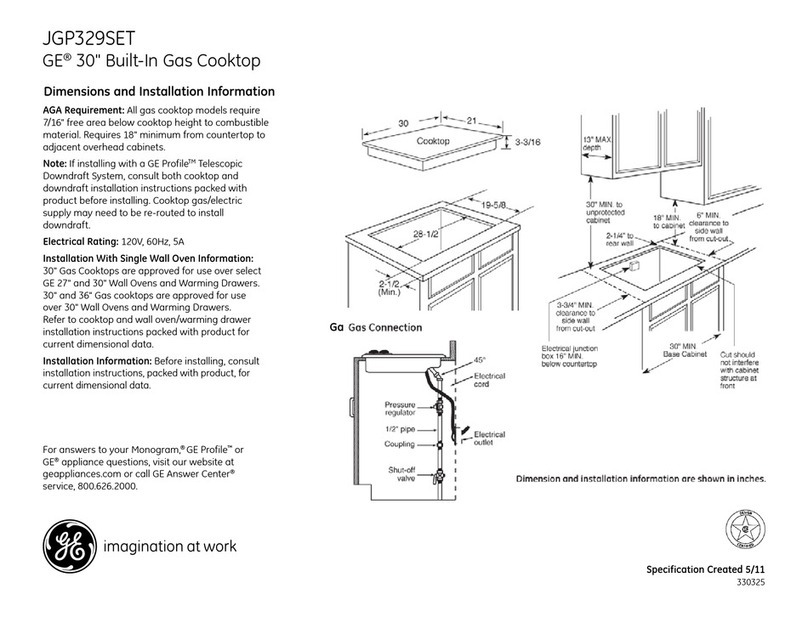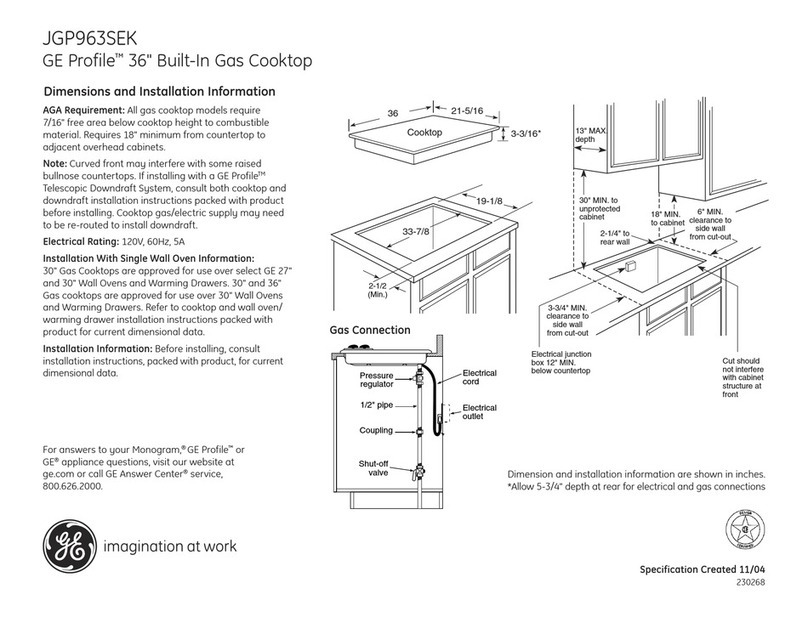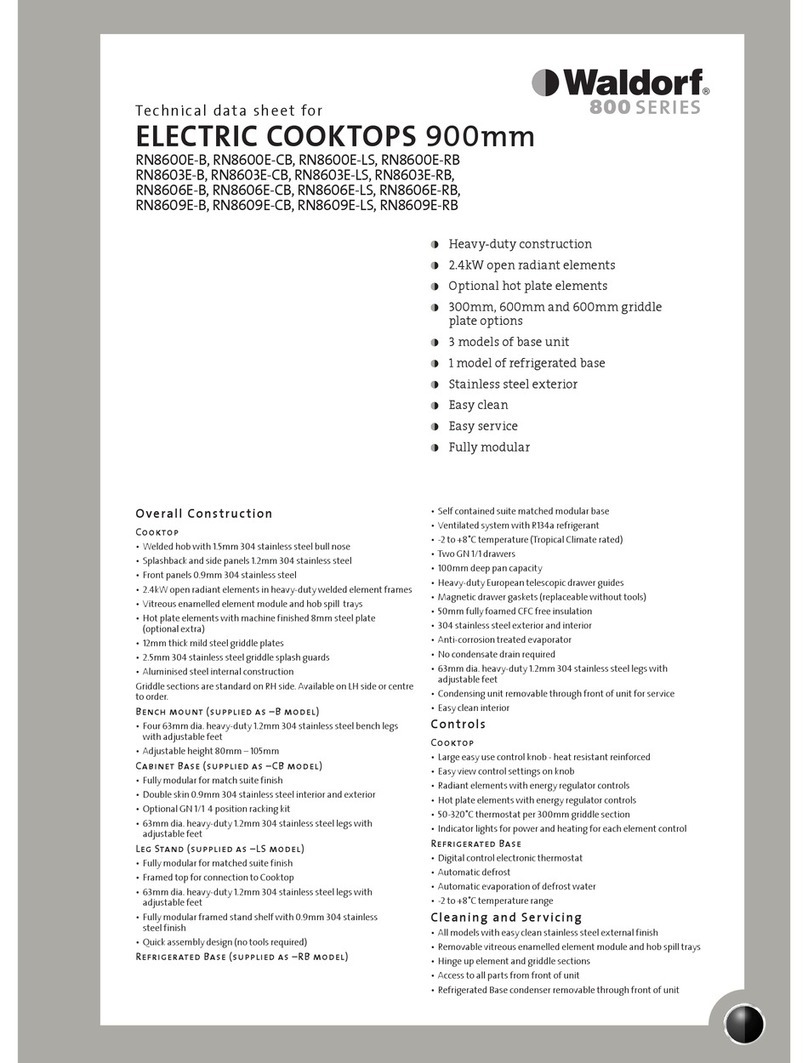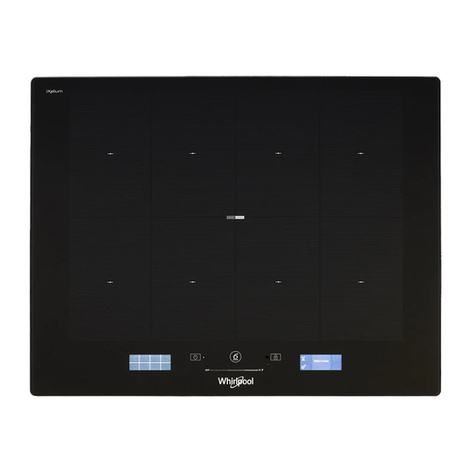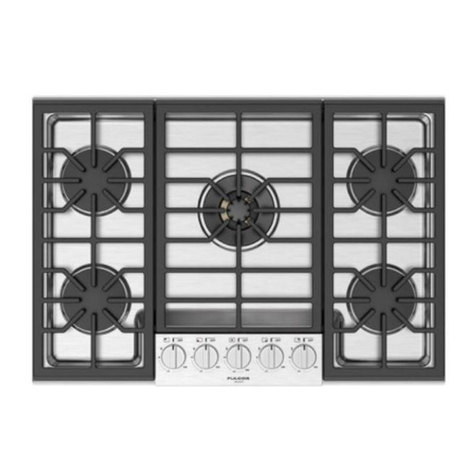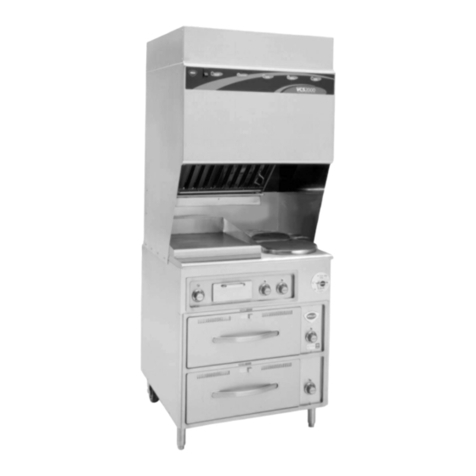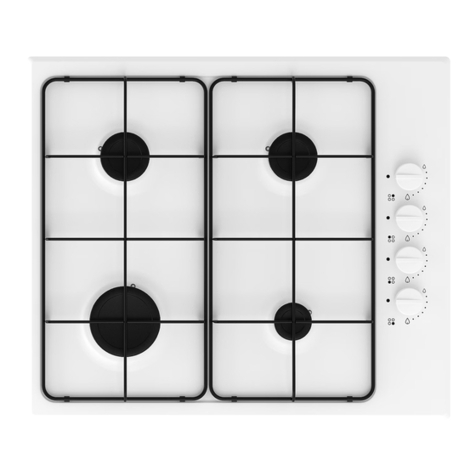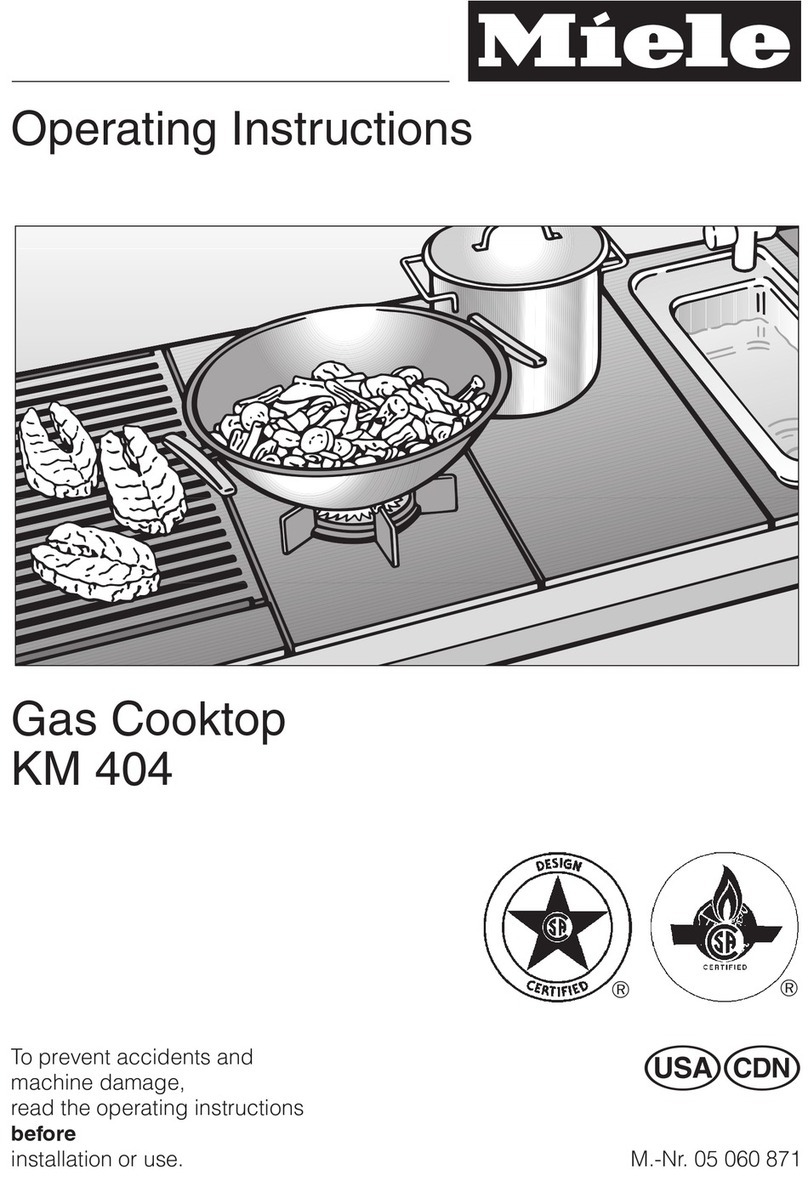
SAVE THESE INSTRUCTIONS
4
IMPORTANT SAFETY INFORMATION.
READ ALL INSTRUCTIONS BEFORE USING.
CAUTION: Items of interest to
children should not be stored in cabinets above
a cooktop—children climbing on the cooktop to
reach items could be seriously injured
Always keep wooden and plastic utensils and
canned food a safe distance away from your
cooktop
Always keep combustible wall coverings, curtains
or drapes a safe distance from your cooktop
Never wear loose-fitting or hanging garments
while using the appliance
Be careful when reaching for items stored in
cabinets over the cooktop Flammable material
could be ignited if brought in contact with flame
or hot surfaces and may cause severe burns
Teach children not to play with the controls
or any other part of the cooktop
Always keep dish towels, dishcloths, pot holders
and other linens a safe distance from your
cooktop
Do not store flammable materials near a
cooktop
Do not store or use combustible materials,
gasoline or other flammable vapors and liquids
in the vicinity of this or any other appliance
Do not let cooking grease or other flammable
materials accumulate on or near the cooktop
Do not operate the burner without all burner
parts in place
Do not place hot cookware on the glass cooktop
This could cause glass to break
Do not clean the cooktop with flammable
or volatile cleaning fluids
Do not clean the cooktop when the appliance is
in use
Avoid scratching the cooktop with sharp
instruments, or with rings and other jewelry
Never use the cooktop as a cutting board
Do not use water on grease fires Never pick up
a flaming pan Turn the controls off Smother
a flaming pan on a surface burner by covering
the pan completely with a well-fitting lid, cookie
sheet or flat tray Use a multi-purpose dry
chemical or foam-type fire extinguisher
Flaming grease outside a pan can be put out by
covering it with baking soda or, if available, by
using a multi-purpose dry chemical or foam-type
fire extinguisher
WARNING: To reduce the risk of fire,
electrical shock or injury to persons, observe the
following:
Use this unit only in the manner intended by the
manufacturer If you have questions, contact the
manufacturer
Before servicing or cleaning the unit, switch
power off at service panel
When cutting or drilling into wall or ceiling, do
not damage electrical wiring and other hidden
utilities
Ducted fans must always be vented to the
outdoors
To reduce the risk of fire, use only metal
ductwork
Do not flame foods on the cooktop If you do
flame foods under the hood, turn the fan on
WARNING: To reduce the risk of a
cooktop grease fire:
Keep fan, filters and grease-laden surfaces
clean
Always turn vent ON when cooking at high heat
Use high settings on cooktop only when
necessary Heat oil slowly on low to medium
setting
Don’t leave the cooktop unattended when
cooking
Always use cookware and utensils appropriate
for the type and amount of food being prepared
CAUTION: For general ventilating use
only Do not use to exhaust hazardous or explosive
materials and vapors
SAFETY PRECAUTIONS
WARNING: NEVER use this appliance
as a space heater to heat or warm the room
Doing so may result in carbon monoxide
poisoning and overheating of the oven
